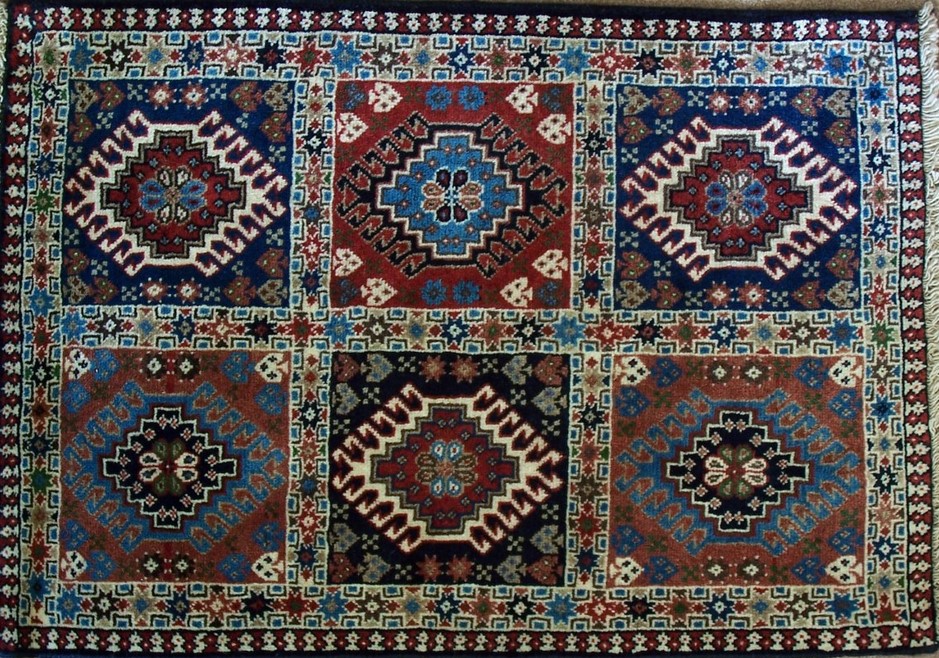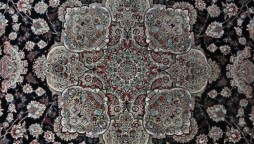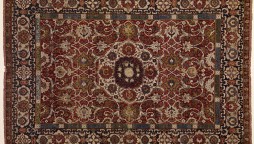How to Appraise an Oriental Rug in 3 Steps

For over 40 years, Ahdoot Oriental Rugs has provided reputable and accurate Oriental rug appraisals for antique rug owners in New York, New Jersey, Florida and beyond. Our team of certified Oriental and Persian rug appraisal experts can evaluate and appraise antique carpets of all sizes and states. In this article, we’ll share exactly how we determine the value of Oriental rugs. To receive your own personalized Persian rug appraisal, call us at 212-290-8484 or contact us HERE.
If you’re interested in learning the value of your Oriental, Persian or Turkish rug, there are a few things to look for that can help you make an appropriate assessment.
While the figure you come up with may not be precise, by following a few simple steps, you can compare your findings against other rugs with the same characteristics to ascertain its estimated value.
Rug owners who are interested in selling their rug or having it insured, however, should always consult a professional Oriental rug appraisal expert in order to come up with a more accurate number.
Not only do insurance companies require a rug to be appraised and documented by a specialist, but if a buyer is interested in purchasing your rug, you will want to make certain you are selling it for the highest current market value.
With this in mind, here are three things to look for when making a personal valuation on your Oriental rug.
1. Find the Knots-Per-Inch or KPI
One of the items that can have a profound effect on the value of an Oriental rug is a carpet’s knots-per-inch, or KPI. Similar to higher thread counts in bed linens, the more knots per square inch your Oriental rug has, the high its quality.
We recently covered this topic in greater detail in our blog just to show just how important a rug’s KPI is to a rug’s quality and design. But the KPI is also crucial to a rug’s value as well.
To find the KPI of your rug, turn your carpet over and select an area that’s easy to access with a measuring tape or ruler.
Using your tool, measure one square inch of your rug and count the number of knots in that area both vertically and horizontally, and then multiply these numbers together. This will provide you with your rug’s KPI.
2. Identify Your Rug’s Origin
An Oriental rug’s country of origin can drastically sway its appraisal value. For instance, antique rugs from Iran and Turkey are far more rare than Oriental rugs from China. Therefore, they receive much better appraisal values.
Learning where your rug was made can be a bit tricky and should likely be performed by an Oriental rug appraisal expert who understands the relationship between a rug’s motifs, or symbols, and its country of origin.
However, if you’re looking for a way to discover this on your own, we covered many of the more common designs in an article we posted earlier this year to make the process a bit easier. This guide will help you examine your Oriental rug’s knotting style, patterns, motifs and colors to attempt to decipher its country of origin.
Another great resource that can be used to identify your rug’s origin is our own rug shop, where you can browse numerous categories of carpets from around the world to make a more precise comparison, and potentially find a rug with the same features as your own.
To appraise your Oriental or Persian rug, contact Ahdoot Oriental Rugs or call us at 212-290-8484.
3. Learn Your Rug’s Age and Condition
- Learn Your Rug’s Age and Condition
Knowing the age of your Oriental rug is crucial to determining its worth. When owners and Oriental rug appraisal experts know a Persian rug’s age, they can accurately assess how well it has (or hasn’t) fared over time, which will demonstrate how well it was made.
In addition, certain Oriental rugs may be considered highly valuable antiques based on their age. Therefore, a much older rug could receive a much higher appraisal value.
To discover a rug’s age, you really should consult an Oriental rug appraisal expert on the subject. The reason for this is a specialist’s ability to consider all the elements of an Oriental rug, including its design, suppleness, color-clarity and origin to properly uncover its true period of manufacture.
In addition, you should examine the rug thoroughly to understand its condition. But while knowing what condition your Oriental rug is in should be an easy task, but it’s also easy to miss a few things while you’re examining your carpet.
To get a proper assessment, look over every portion of your rug for any sort of damage coming from wear, pests, stains or other sources. Check the edges of the rug for fraying, and look at your rug’s coloring to see if it has a strong, earthy patina that usually indicates both natural dyes were used and the possibility of it being an antique rug.
John Ahdoot, owner of Ahdoot Oriental Rugs, said about this matter in particular:
"An Oriental rug’s age or antiquity is probably the most important factor when making a value assessment for insurance or sale. Many of our clients have been surprised to find their rug is either much older than they imagine or was made a great deal later than they had supposed. It takes a trained and practiced eye to make a determination on a rug’s true age."
Conclusion
Consulting a certified Persian rug appraisal expert about the value of your antique rug will help you understand its worth and determine if it is a valuable asset.
Top-rated Oriental rug appraisal professionals, such as Ahdoot Oriental Rugs, will be able to tell you how much your rug is worth, what it would sell for in the current marketing, what a comparable replacement would cost and more to help you make an informed decision about your antique carpet.
Need help finding out more information on your Oriental, Persian or Turkish rug? Contact Ahdoot Oriental Rugs HERE or call us at 212-290-8484 for answers to your questions or to have a specialist perform a Persian rug appraisal in your home.




